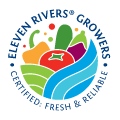Best Practices for Creating an Effective HACCP Manual

The Hazard Analysis and Critical Control Points (HACCP) operating manual is the face of the established food safety management system. It is a repository of end-to-end processes, procedures, formulations, schematics, recipes, etc., and is created with the help of collaborative, cross-functional thinking. Ensuring the HACCP manual remains relevant, up-to-date, and accessible are goals that are quite easy to achieve. A few best practices when it comes to creating an effective HACCP manual include the following.
Update the HACCP team members section and ensure the team members are aware of it. The HACCP team members, roles, positions, and contact information need to be up to date. In the event a team member is replaced by another employee, have timely communications sent out to the rest of the HACCP team and senior leadership as well so the key decision-makers are aware of the changes. In some instances, an external consultant(s) may have provided the organization with HACCP system implementation support. It’s beneficial to include their information as well.
Verify the documented flow chart in the HACCP manual periodically. Walk the flow at a cadence level and choose different times and shifts of the operation for each verification round. From my experience with implementing HACCP systems, I sometimes noticed the flow of raw materials and finished products experience a slight disruption when the operation gets busier—this is more likely to occur in the catering environment than within a linear manufacturing operation. Carry the most current and approved floor plan with you while verifying the flow chart and encourage other members on the team to verify the flow chart as well. For newer team members, this could be facilitated through a guided internal audit.
Upload the manual to a secure server. HACCP operational manuals don’t need to be limited to paper-based manuals alone. It is easier to update and share digital versions of the HACCP manual with core team members.
Challenge the hazard analysis. With escalating instances of cross-contamination, it is imperative to remain proactive by ensuring the hazard analysis is up-to-date. A best practice is investigating incidents of contamination with regard to the ingredients or food products your organization primarily handles. Think about which region has seen an increase in recalls recently and why. Are new pathogens surfacing? Are there new strains of the pathogen in focus surfacing?
Build a narrative behind the organizational chart. Take the organizational chart in the manual one step further by highlighting the role each member plays towards supporting and maintaining the established HACCP system. A former client of mine added a light touch to this particular section and included the favorite ice cream flavor of each member of the organizational chart.
Building a narrative helps reinforce the senior leadership’s commitment towards food safety and quality management.
Include a legend of formats, divided by sections. Food safety and hygiene formats, such as cleaning schedules, temperature logs, and pest control logs, are usually included towards the end of the manual and often times grouped together. Keeping formats organized, and where applicable, in their numbered series, helps with easy retrieval.
What are some best practices you follow or seen other organizations practice around maintaining a HACCP manual? Share your thoughts with your peers in the comments section below.
Source: www.foodqualityandsafety.com


